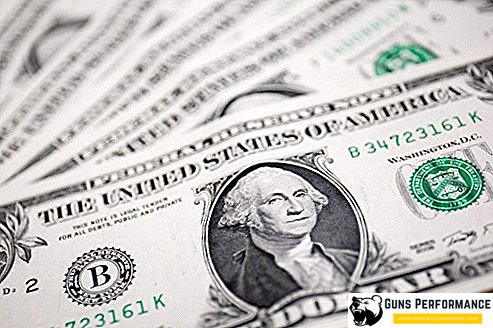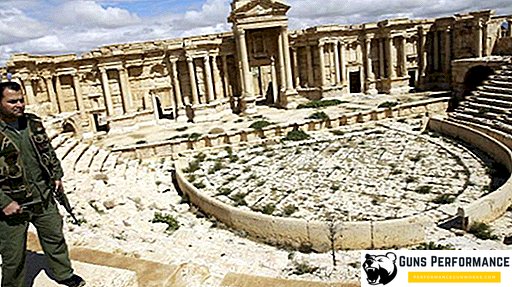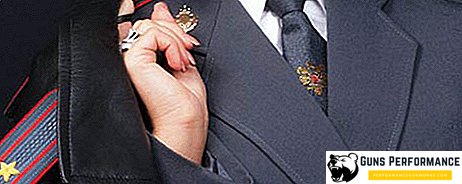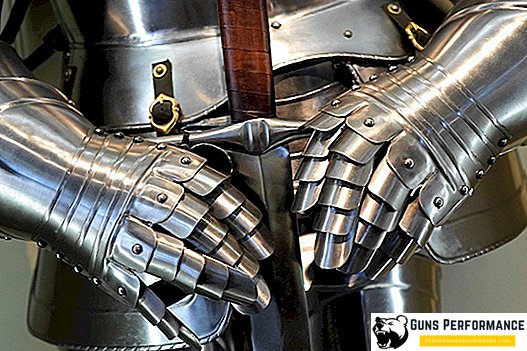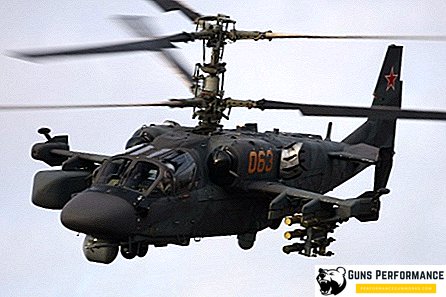
Currently, the post of president of Syria is Bashar Assad. The Syrian head is the head of the executive branch, the head of state, the supreme commander of the armed forces of Syria. Presidential orders may be transmitted through his prime minister, to whom all the powers of the president may be transferred. The duties of the head of state include the appointment and removal from office of prime ministers or other members of the government, as well as the appointment and removal from office of senior officials of the Syrian armed forces.
Modern Syrian electoral legislation
As a result of reforms in 2012, a new constitution was adopted in Syria. According to her, the election of the president should be held only on an alternative basis, which means there are at least two candidates. According to the same Constitution, the president cannot be elected for more than two seven-year terms in a row.
In 2014, the Syrian parliament approved a new law on presidential elections. According to this law, only a citizen of Syria who has reached the age of 40 and lives in the country for at least the last ten years can be president of the country. In addition, the applicant for the position of head of Syria should not have foreign citizenship.
To become president of Syria, citizens must submit applications to the Supreme Constitutional Court. After that, each candidate for the role of president must collect at least thirty-five signatures of members of parliament. Only then can the Constitutional Court register a presidential candidate.
A brief history of Syria before the beginning of the twentieth century
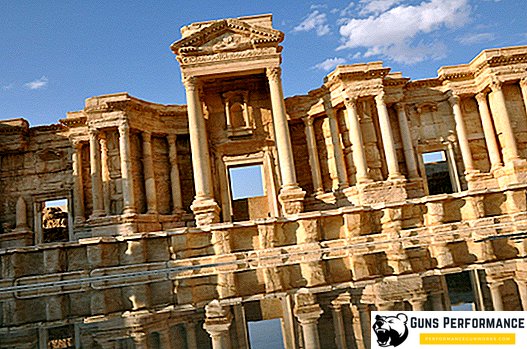
Syria as a state was formed only in the postcolonial period, which began in the twentieth century. Prior to this country’s territory were included in other state formations. Despite this, the Syrian people have a rich history dating back more than one thousand years. The origins go back to the semi-legendary ancient Eastern kingdoms. At that stage of development, the Syrian people had the following features:
- At the head of the state stood the supreme ruler. To his status was high, the power of the ruler was deified;
- The supreme power was inherited;
- There was a slave system in the country;
- The ideology was supported by the priestly estate, which placed the cult of worship of the supreme ruler on the same level as the gods;
- The need to deify the ruler arose because of the strong tribal ties that often dominated loyalty to the state. Each clan considered itself worthy to take a leading position in the state. Only a direct descendant of God could be considered worthy to rule the whole nation.
Gradually, a bureaucratic apparatus began to form on the territory of modern Syria. Customary law began to enshrine in written sources. Foreign and domestic trade began to develop, a single calendar appeared. The peculiarity of this period of development were constant wars.
The economic development of the region has always been characterized by heterogeneity. If major trading cities, such as Damascus, were the centers of all economic life, then remote regions often lagged behind in development by several centuries. The Syrian people were constantly under the authority of foreign invaders. Thus, we can trace the history of the Syrian people:
- In the 15th century, the territories of modern Syria were ruled by the Egyptian pharaohs;
- In the X-VIII centuries BC. e. Syria was part of the Damascus kingdom;
- Then the lands of Syria became part of the Assyrian kingdom, the kingdom of Babylon, the kingdom of Israel and the Achaemenid state;
- The next ruler of the Syrian lands was Alexander the Great;
- After the death of the Macedonian land of modern Syria became part of the kingdom of the Seleucids;
- In 83 BC, Syria became part of the Armenian Empire of Tigran the Great;
- In 64 BC, the Roman commander Gnei Pompey conquered Syrian lands and annexed them to the Roman Empire;
- In 395, Syria became part of the Byzantine Empire;
- In 636, Byzantium lost these lands, and they became part of the Arab caliphate.
After that, the lands of modern Syria passed to the Umayyad dynasty (from 661 to 750), part of the land was later seized by Egyptian dynasties, and then the country became part of the Seljuk Turkish state.
After the conquests, the local elite, as a rule, remained in power, if they voluntarily recognized the primacy of the new ruler. Each weakening of the next kingdom or empire was accompanied by bloody internecine wars. They could be both within the same province, and between different provinces, each of which declared its independence and tried to subjugate its neighbors.
During the medieval period, rich Syrian cities came to the attention of European ruling houses. Capturing the richest eastern cities through which trade caravans passed was a dream of every European monarch. Since none of the rulers of Europe had a strong enough army to march to the east, crusades were declared under the slogan of liberating the Holy Sepulcher from the pagans. As a result of the crusades, part of the Syrian lands fell under the authority of knightly orders.
In 1187, at the call of Salah ad-Din Yusuf ibn Ayub, most of the Muslims went on a holy campaign against the Crusaders in order to dislodge them from their original territories. Gradually and systematically capturing the city behind the city, Muslims ousted the Europeans from Syria. Despite this, the Crusaders resisted for over a hundred years. The last base of the crusaders, which was located on the island of Arvad, was captured in 1303 year.
The wars that followed one after the other seriously hit the Syrian economy. Many cities were simply destroyed. The situation was corrected only when the Mamluks came to power in Syria. They were able to restore the country's economy and administrative system. Mamluks quickly figured out with rival clans, and put things in order in the country. But the invasion of the hordes of Tamerlane brought the country back several centuries. The united country split into several areas that constantly fought among themselves.
Such fragmentation in Syria continued until 1516, when the Turkish army of Selim I annexed the Syrian lands to the vast Ottoman Empire. During Turkish rule, it became clear that Syria is closer to Egypt than Istanbul. Despite this, the Ottoman Empire held on to Syrian lands for a long time. In the late nineteenth and early twentieth centuries, Ottoman rule weakened. As a result, religious stratification began in the country. This process is cleverly provoked by Europe.
Syria in the twentieth century
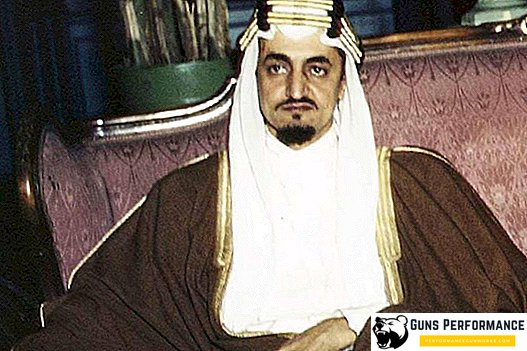
In 1919, a significant event for Syria took place - Faisal ibn Hussein, who was the commander of the Arab Liberation Army, received the Syrian crown from the hands of the Syrian General Congress. Syria was declared an independent constitutional monarchy. Despite this, Syria received complete independence only after the end of the Second World War. England and France have long been secretly fighting with each other for power in the region.
In 1920, French troops were brought into Syria. England ceded the country to France, in return for reinforcing England’s presence in Iraq. The French immediately divided the country into 11 regions, and flooded the Syrian market with their goods, undermining the local semi-handicraft and handicraft production. Despite the fact that England voluntarily left Syria, she constantly tried to organize coups in order to save the country from its French presence. For example, in the years 1925-1927 the British secretly supported the Druze uprisings, and in the 1930s - the trade union movements.
In 1928, the nationalists of Syria were able to force the French administration to carry out a series of reforms, as a result of which a relaxed Constitution was adopted, created an institution of elected president and allowed to create a unicameral parliament. In 1945, the French troops left Syria, as a result of which the country again began to disorder and vacillation. The middle and petty bourgeoisie, the rural inhabitants, who did not participate at all in the government, vigorously expressed their discontent with this state of affairs.
On April 17, 1946, the last French troops were withdrawn from Syria, as a result of which Syria became a real sovereign state. She was able to form her own armed forces and become a member of the UN. April 17 is still celebrated in the country as a national holiday, which is called the Day of Evacuation.
After that, Syria tried to get closer to Egypt, but this attempt failed. Then the country turned to the socialist model of development, which the Soviet Union strenuously promoted. With the help of "Big Brother" in Syria, on May 8, 1963, a revolution occurred. The Ba'ath Party came to power, which became the embodiment of the ideal of the country's social forces.
In 1970, there was another coup in the country, this time bloodless. Hafez Asad came to power, who organized both the right and left parties. In 1973 a new Constitution was adopted. According to her, Syria became a democratic people's socialist republic with private property limited by the law.
Although the Constitution was clearly spelled out that the head of the republic was elected for seven years, and the status of the president should be clearly regulated, Assad was a real autocrat. Thanks to the natural cunning and thorough knowledge of the political situation in the country, he managed to create a political system that suited almost all pressure groups in the country. Thanks to this, Assad ruled for three decades. It cannot be said that his rule was cloudless, as there were several attempts at a coup d'etat in the country during this period, but the president was able to successfully repel them. He graduated from his political career. Asad is very characteristic of the Eastern rulers: he handed over power to his son Bashar.
Heads of Government of Syria from 1918 to 1936
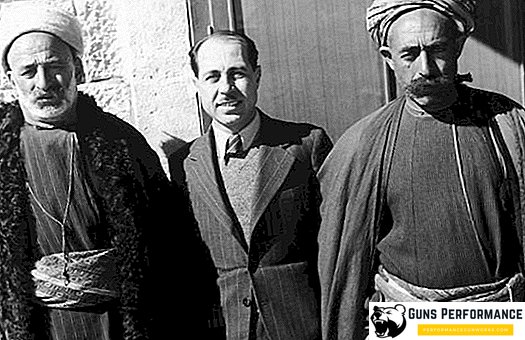
The first ruler of modern Syria was Faisal I. In 1920, at the General Syrian Congress, he was proclaimed king of Syria. Unfortunately, the French government ordered it in its own way, and in the same year sent its troops into the country. King Faisal I did not dare to openly confront France, so he surrendered Damascus without a fight. The goals and objectives of King Faisal in Syria were not to come true, but in 1921 he became king of another Arab state - Iraq.
The presidents, who were in Syria during the French mandate, ruled in the following sequence:
- The first president of Syria was Suhbi Bey Barakat al-Khalidi. His reign is 1922-1925. He became famous as a fighter for the unification of the Syrian state. Thanks to his efforts, the states of Aleppo and Damascus united in one Syrian state. In 1925, he resigned, as France refused to unite the Druze and Alawites states with Syria;
- The next president of Syria was Francois Pierre Alip. He ruled the country for only a few months in 1926;
- From 1926 to 1928 Ahmad Nami stayed in power. After his inauguration worked closely with the French authorities. He was removed from office because he was suspected of preparing a revolution that was supposed to return the monarchy to Syria. Moreover, the current president should have become a monarch;
- Taj al-Din al-Hasani ruled from 1928 to 1931. Remarkably, he was not the president, but only fulfilled his duties;
- Muhammad Ali Bey al-Abib ruled from 1932 to 1936. During his reign, the national liberation movement was greatly intensified.
Muhammad Ali Bey al-Abib was the last president of Syria during the French mandate. The following presidents were already in independent Syria.
Presidents of Syria from 1936 to our days
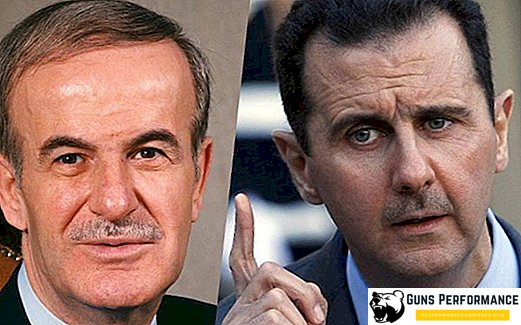
Although Syria has been recognized as an independent state since 1936, France was in no hurry to withdraw its troops. Here is a list of the presidents of Syria since 1936:
- The first president of independent Syria was Hashim al-Atassi. He ruled from 1936 to 1939. Resigned, as France continued to consider Syria to be its colony, despite its formal independence;
- Bahijaddin al-Khatib was the president of Syria from 1939 to 1941. Fully supported the policy of France. As a result, he gained immense unpopularity among the Syrian elite. Charles de Gaulle was dismissed, as the tension in Syria was ready to spill over into mass riots;
- Khaled Bey Al-Azem was Acting President in 1941;
- Taj al-Din al-Hasani, who was acting President in 1928-1931, he became President in 1941. Rules the country until 1943;
- Jamil al Ulshchi was and. the president in 1943;
- Ata Bey al-Ayyubi held the presidency in 1943;
- Shukri al-Quatli was a real revolutionary. He served as president from 1943 to 1949. He was able to achieve the complete withdrawal of French troops from the territory of Syria;
- Husni az-Zaym ruled for several months in 1949;
- From 1949 to 1951, Hashim Atassi again held the presidency. This time he was appointed interim president;
- Fawzi Selu ruled the state from 1951 to 1953;
- Adib ash-Shishakli was president from 1953 to 1954;
- Maamun al Kuzbari and Hashim Atassi were Acting the president. The first time in 1954, the second - from 1954 to 1955;
- From 1955 to 1958, Shukri Quatley again became president;
- From 1958 to 1961, Gamal Abdel Nasser was president;
- In 1951, and. Maamun Kuzbari again became president;
- Izzat an-Nuss was acting the president in the same 1961;
- Nazim al-Qudsi held the presidency from 1961 to 1963;
- In 1963, Luay al-Atassi came to power;
- From 1963 to 1966, Amin al-Hafez was in power;
- From 1966 to 1970, the head of state was Nureddin Al-Atassi;
- From 1970 to 1971, Ahmed Al-Khatib became interim ruler;
- On February 22, 1971, Hafed Al-Assad took the presidency. He ruled the country until the year 2000;
- In 2000, about a month of. the president was Abdel Halim Haddam;
- Since 2000, Bashar al-Assad has become the president of Syria.
Currently, Bashar Assad has been President of Syria for more than seventeen years, being a worthy successor to his father.
Features of state power in modern Syria
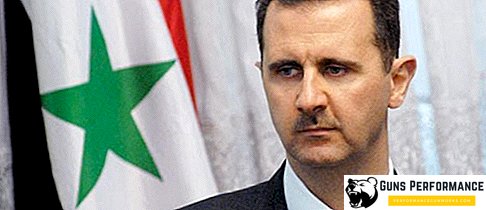
Despite the fact that Bashar Asad is the same autocrat as his father, the Council of Ministers is formally the highest executive body in the country. The latter is entirely formed by the president and must obey the prime minister, who is appointed by the president.
The chief executive in Syria is the president. He is selected for a seven-year term. The Constitution stipulates that the number of seven-year terms is unlimited. The candidacy of the president is submitted to a referendum by the People’s Council. An interesting fact is that in the presidential election there can be only one candidate whom the population can either approve or not.
The President does not submit to Parliament, but the Cabinet of Ministers may express his distrust. Syria’s court also has no power over the president. Bashar Assad, by his decrees, can appoint and remove vice-presidents, ministers, ambassadors and various military officials.
Features of the Syrian Constitution concerning the presidential power in the country

The constitution of Syria has been in effect since 1973. Over the years that have passed since its adoption, many changes were made to it, the main initiators of which were the last two Syrian presidents. The last amendment to the current Constitution was made in 2000, after the death of Hafez al-Assad. Parliament had to change the minimum age of the presidential candidate so that the president could legally be Hafez’s son, Bashar.
Any citizen of Syria can participate in presidential ballots from the age of 18. In addition, they have the right to elect members of parliament, as well as the right to be elected to it. Syrian President must be an Islam. The rest of the Syrian Constitution copies other world Constitutions:
- The state guarantees freedom of speech, press, and so on;
- Protects private property;
- Guarantees the right to work;
- Guarantees a number of social benefits.
In reality, all power in Syria belongs to the president, the government is puppet.
The residence of the President of Syria
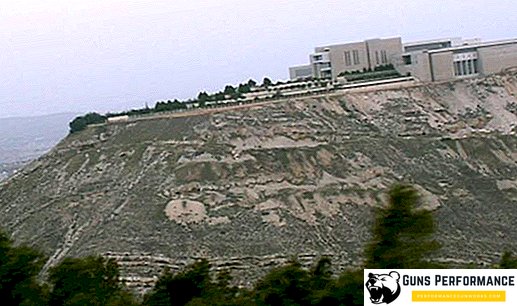
The residence of the Syrian president is in Damascus. This is the people's palace of New Shaab, in which the president’s reception is located. The palace is located on Mount Mezz. Its area is more than 31,500 square meters. Since Syria has a restless atmosphere, the palace is surrounded by a wall and watchtowers.
As for the design of the presidential palace, it is prescribed by the Japanese architect Kenzo Tange. Despite this, there are unconfirmed reports that the Japanese architect left the project without finishing it, since he could not accept the mixture of styles that the Syrian president wanted to see. Особенностью резиденции президента Сирии являются огромные медные ворота, которые создал сирийско-еврейский известный художник Морис Нсеири. Дворец президента строился с 1985 по 1990 годы.
В настоящее время президент вместе со своей семьёй проживает в своей резиденции. Иногда они могут жить в старом президентском дворце Тишрин, который расположен в районе АР Рабуа.


